Continuing with my trip to Iceland… While in Vik, I made an early morning visit to Skogafoss. It had been raining most of the way there, and it continued to rain after arriving. After waiting for the rain to clear, I decided to abandon this site. However, the next day was clear of rain, so I headed back to make a great image of the sunrise.
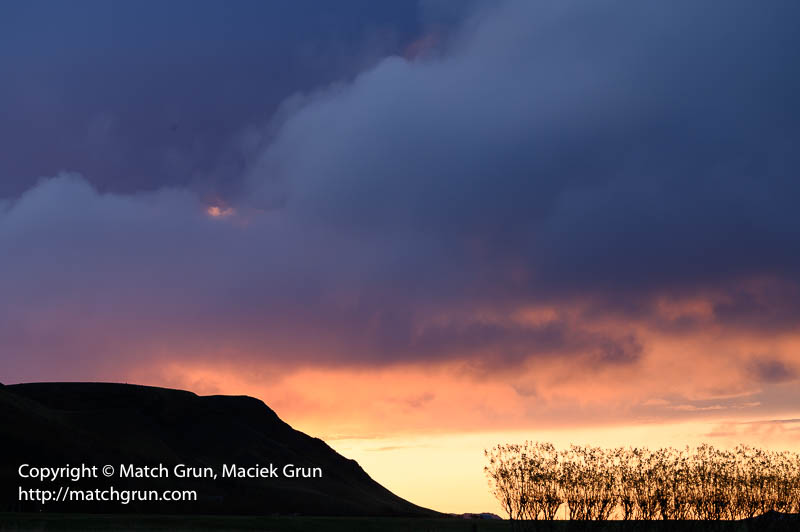
About the time there was a major weather change over Iceland. Along the south coast, gale force winds had developed. This caused many road closures, over a 3 or 4 day period, until the winds weakened. I managed to make the following image of the main water fall at Skogafoss. It was really windy here, even with a camera on a tripod. However, other photographers were not so lucky — I did see one tripod blown over, with the sound of breaking glass, probably causing a broken filter.
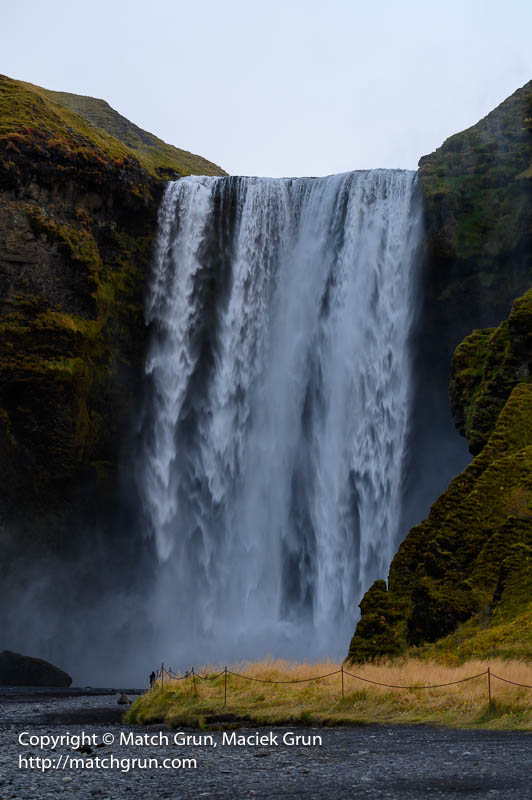
Returning to Vik, I had breakfast at the hostel. Several hostel visitors that I met had left early that morning so they could complete their journey in case they were delayed by road closures. Later I headed east and stopped at another waterfall, Stjornarfoss, that I had visited during a previous visit to Iceland. This waterfall faces south and is located in a short canyon. Even here, there were strong gusts of wind that blew from the north over the waterfall.
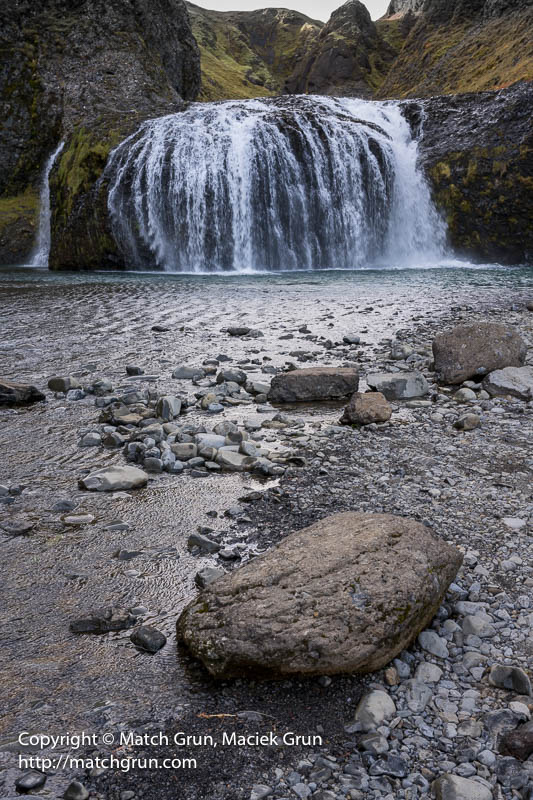
Returning to the car, I passed by the following curved treeline. The low autumn sun cast long shadows, even in the middle of the day.

Returning to Vik later that afternoon, the road leading west out of Vik was closed because of the high winds. There were many travelers in tour buses that had stopped at the main shopping center in Vik, taking a break before resuming their journey towards Reykjavik later that day.
The following day was my turn to move the the next hostel location at Vagnasstaðir, closer to Hðfn, along the southeast coast. I then proceeded to Vestrahorn, a location that I had missed during previous visits to Iceland. Many beaches in Iceland have black beaches, as a result of black sands originating from volcanic and igneous activity on the island. In this image, I found a location where the yellow grasses grew on the black sand dunes — this provided a nice contrast of the yellow against the black.
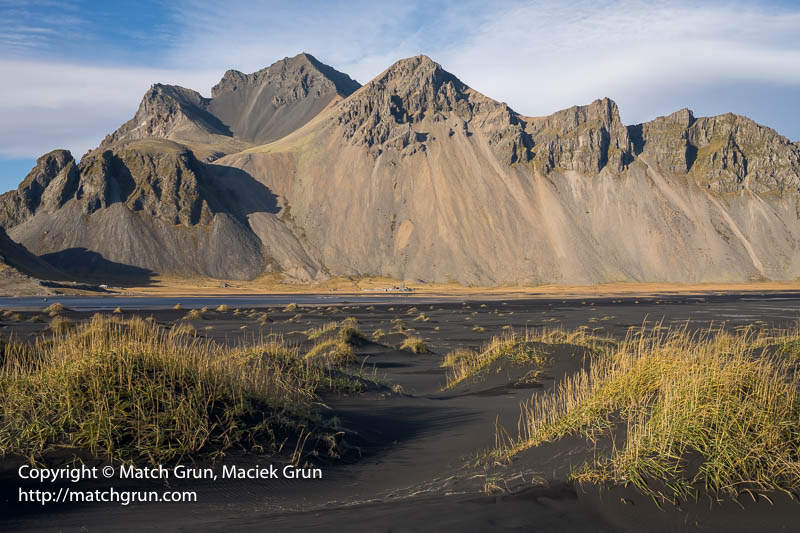
During my stay there, we had a snow storm during the first night. During the course of the next day, there was a rain/snow mix, that eventually melted by the end of the day. I did manage to get some clothes washed and shopped for some groceries.
The following day, the snow and rain had cleared, so I decided to head towards Jokulsarlon. This is a location when the Vatnajokull (glacier) calves into a lagoon. At low tide, icebergs are carried out to the sea. Later these icebergs are washed up onto the beach when the tide rises. This stretch of beach is often called “Diamond Beach”. Here I made several images of the icebergs as the rising sun shines through the ice.

Even though the snow and rain had stopped, the high winds continued to blow from the north. This gave me a great opportunity of capturing the rough seas as the waves rolled into the coast. The high winds created lots of spray from the surf allowing some backlit waves to be captured. Absolutely spectacular!
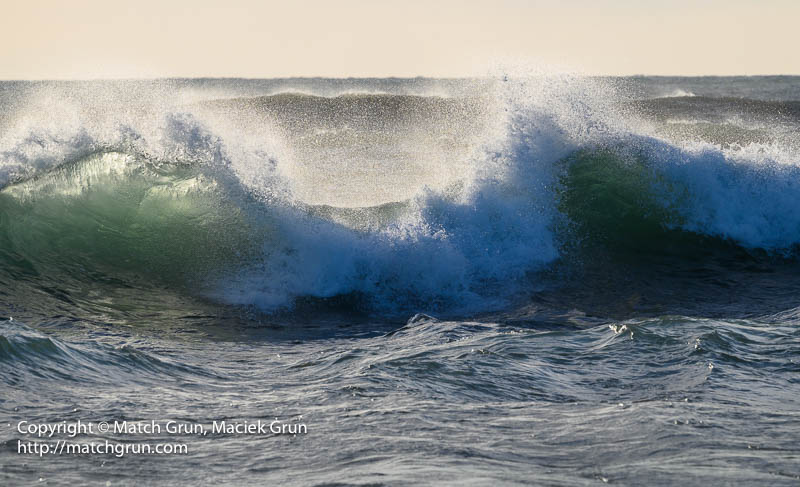
Later that day, I headed back towards Hðfn and past Vestrahorn, to the east coast. Along the route, I made images of the snow covered mountains.
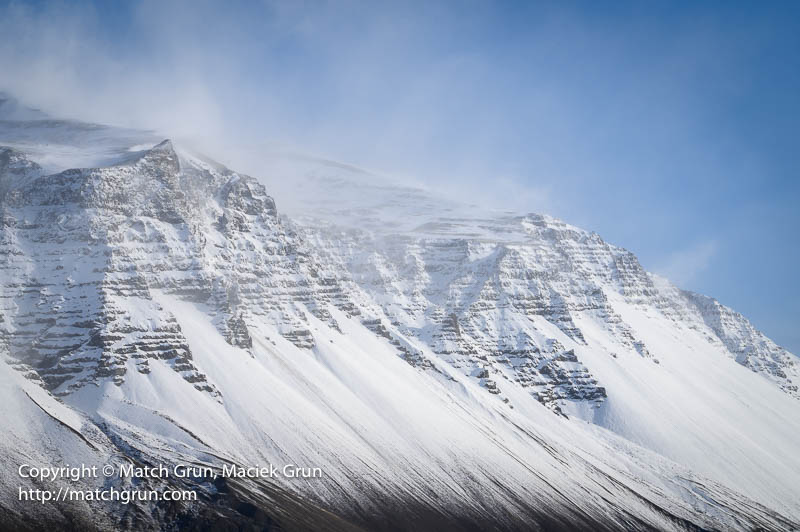
There was very little snow along the east coast. However, I stopped at one location to make images of the breaking waves as the wind carried the spray aloft from the breaking surf. In the following image, I took shelter behind rocks below a low hill. Again, some really spectacular conditions.

After making images here, I decided to head further up the coast. I found a parking lot, located above the cliff top. At this location, the winds were even stronger. Also, I had no place where I could shelter, so I had to lean backwards against the wind when capturing images so I didn’t get blown over the cliff!!!

These proved to be another location with spectacular waves.
